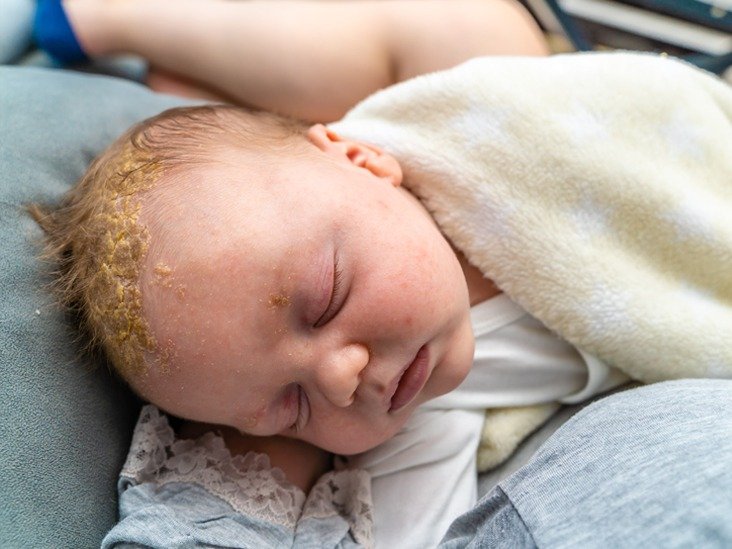
Cradle Cap
The cradle cap is also known as infantile seborrheic dermatitis or pityriasis capitis.
Cradle cap occurs mainly in infants. It’s a very common and harmless condition that looks like dandruff. It causes crusty scales over the scalp. It is not a painful condition. It occurs due to the overproduction of sebum from the sebaceous gland in the hair follicle that gets deposited on the surface area of the skin.
It mainly occurs over the scalp, eyelids, eyebrows and around ears.
It is a self-limiting disease that can last until the age of 2 or 3 years.
Causes of cradle cap:
The exact cause of the cradle cap is not known.
â— It has no relation to hygiene. It can also occur if you are maintaining hygiene. It’s not an infection.
â— Malassezia is yeast and has been seen in many cases of cradle cap. Yeast breaks down the sebum then they eat the saturated fatty acids and leaves behind M globose and M restrict which results in yellowish-white deposition over the scalp, the cradle cap lasts until the age of 2 or 3 years.
â— It occurs due to the overreaction of sebaceous glands in newborn babies because mother hormones are still present in the blood. Sebum secretions make dead cells attach to the surface of the skin instead of falling off.
Symptoms :
â— The cradle cap is seborrheic dermatitis and occurs only in infants.
â— Oil greasy, yellowish or white crusts deposit over the scalp.
â— It looks like dandruff when flakes separate from the surface of the scalp.
â— it may vary in colour from one child to another child.
â— Hair loss from the affected part of the scalp.
â— White or yellowish scales over the scalp, eyelids, nasal folds and around the ears.
â— In some children, the cradle cap lasts for 2-3 months whereas in some children the cradle cap lasts for 2-3 years.
â— It’s painless or harmless. complications :
â— Persistent diaper rash.
â— Redness and irritation can occur.
â— Forceful removal of crusts can make them bleed and infection can occur from bacterial exposure.
â— Sometimes the cradle cap is difficult to distinguish from fungal infection.
Management:
â— The scalp of the infant should be washed daily with gentle baby shampoo.
â— A soft toothbrush should be used for gentle removal of scales from a scalp or cradle removal soft comb that comes in the market would be very useful.
â— Oiling should be done properly before and after washing the head which prevents the reoccurrence of the cradle.
â— If the cradle cap doesn’t get better consult a doctor.
â— Do not pick up the crust that may cause bleeding and infection.
â— Do not use harsh shampoo or soap.
â— Do not use olive oil and peanut oil on the baby’s skin or scalp.
â— If the cradle cap is spreading further to body parts or any irritation or redness appears do not ignore these signs and rush to the doctor immediately.
Homeopathy management:
â— Calcarea carb: Calcarea carb can be given to a baby who has thick crusts over the scalp which may bleed and it can
spread from the scalp to face, nasal folds, or to the ears, etc. Profuse sweating of the head with the foul smell is a marked symptom of Calcarea carb.
â— Graphics: graphite is well marked where the cradle cap appears over the scalp and involves the face and ears. Sticky fluid discharge which sticks hair together. The thick crusty appearance of the scalp may look filthy. They get clear after washing but reappear again.
â— Mezereum: mezereum has very good results in cradle cap where thick leather-like crust appears over the scalp and eyebrows. The sebum gets deposited over the surface of the skin that is white. Sweating is very sticky and glued the hair together.
â— Dulcamara: dulcamara is useful where scales over the scalp are brownish and the border of the affected area is red. It spread to the face, nose and chin. The crust is thick and moist and bleeding can occur after picking up the scale.